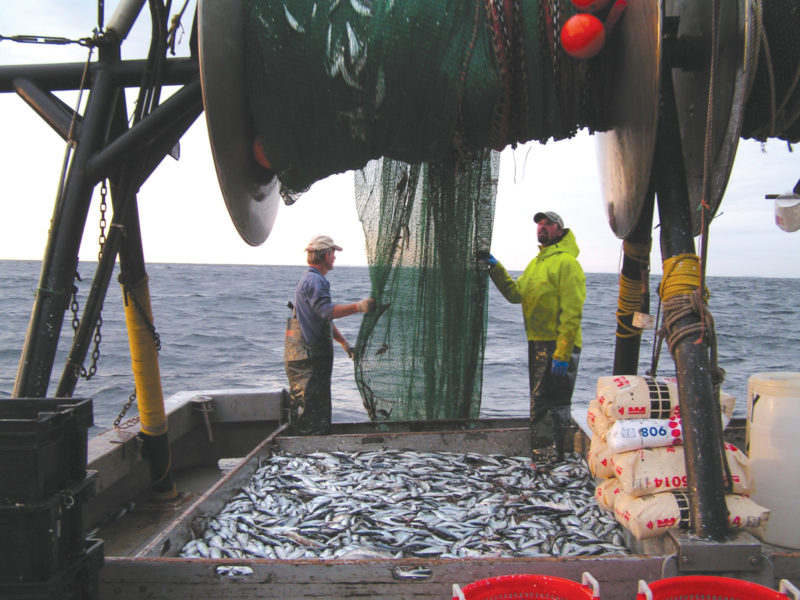Since the late 19th century, New England’s commercial Atlantic herring fishery was tied to both the canning industry and the lobster fishery, and the connections to today’s lucrative lobster industry continue. For this reason, changes in the herring industry have wide-reaching ripple effects.
The 2018 benchmark stock assessment revealed changes to stock health and concerns about trends in recruitment and spawning stock biomass. In fact, 2016 recruitment was the lowest on record at 1.7 million fish.
The 2018 landings, says Kirby Rootes-Murdy of the Atlantic States Marine Fisheries Commission, were 43,772 metric tons with an ex-vessel value of $23 million. In 2019, the quota was slashed by more than half.
By the end of 2019, preliminary figures say more than 12,700 metric tons of herring were landed, according to Min-Yang Lee of the Northeast Fisheries Science Center. The value was $9.45 million.
Suzannah Raber, owner of New England Fish Co, a bait company, says markets have shifted.
“We used to send herring to Canada,” says Raber. “But now, 95 percent of our herring goes to lobster bait. We catch it and distribute it.” These days, Raber’s company targets mackerel this time of year, then goes seining for herring in summer.
“But we want to save the quota we do have. This year, we have a new buffer zone, where we can no longer go midwinter trawling. That’s not going to be good. We’re worried about it,” says Raber. “We caught about 80 to 85 percent of our herring last year midwater trawling in what is now the buffer zone. It’s a very valuable area.”
Federal regulators approved a rule prohibiting midwater trawling within 12 nautical miles off the coastline, stretching from Maine to Rhode Island, and 20 miles off eastern Cape Cod.
To minimize disruptions, Raber says her company is focused on putting up a lot of fish in 55-gallon drums, and then refrigerating it at their facility in Turner, Maine. “We have a 10,000-barrel capacity. We keep it stocked so we have fish for the lobstermen.”
Raber says herring prices have gone up, a trend that started even before recent quota cuts.
“It’s sustainable at this price for bait and lobstermen. We don’t want the price to go up, outprice our market. We don’t want to hurt the lobstermen, and we have to pay for fuel, crew and insurance,” Raber adds. “We were in the 35-45-cent-per-pound range off the boat last year, depending on time of year.” This year, she expects prices to be similar.
One factor is local menhaden fishing regulations. In Maine, some lobstermen are now catching their own pogies. Alex Todd, a Long Island, Maine, fisherman, says he’s noticed a shift from herring to pogy. How pogy gets managed in Maine, adds Raber, will impact herring price and markets.
For the 2020 season, regulators set the allowable catch limit at 25.5 million pounds (11,571 metric tons). The 2020 ACL could be changed by both the Atlantic states commission and New England Fishery Management Council later this year, depending on the results of the stock assessment update.
“The Northeast Fisheries Science Center is conducting a management track assessment in 2020 — that means they will update the 2018 assessment model with two new years of data (adding 2018 and 2019),” according to Deirdre Boelke of the council. Preliminary results are expected later this spring/early summer.
So 2020 is a busy year for the herring plan. A few large actions are scheduled for spring, while the council is developing two new actions that should be effective in 2021. Regulators will also hold public hearings in early March. But for now, it seems likely that the catch will stay low.
“Unless the stock assessment later this year shows a different trend from 2018, we anticipate continued low quotas into the future,” says Kirby Rootes-Murdy.







